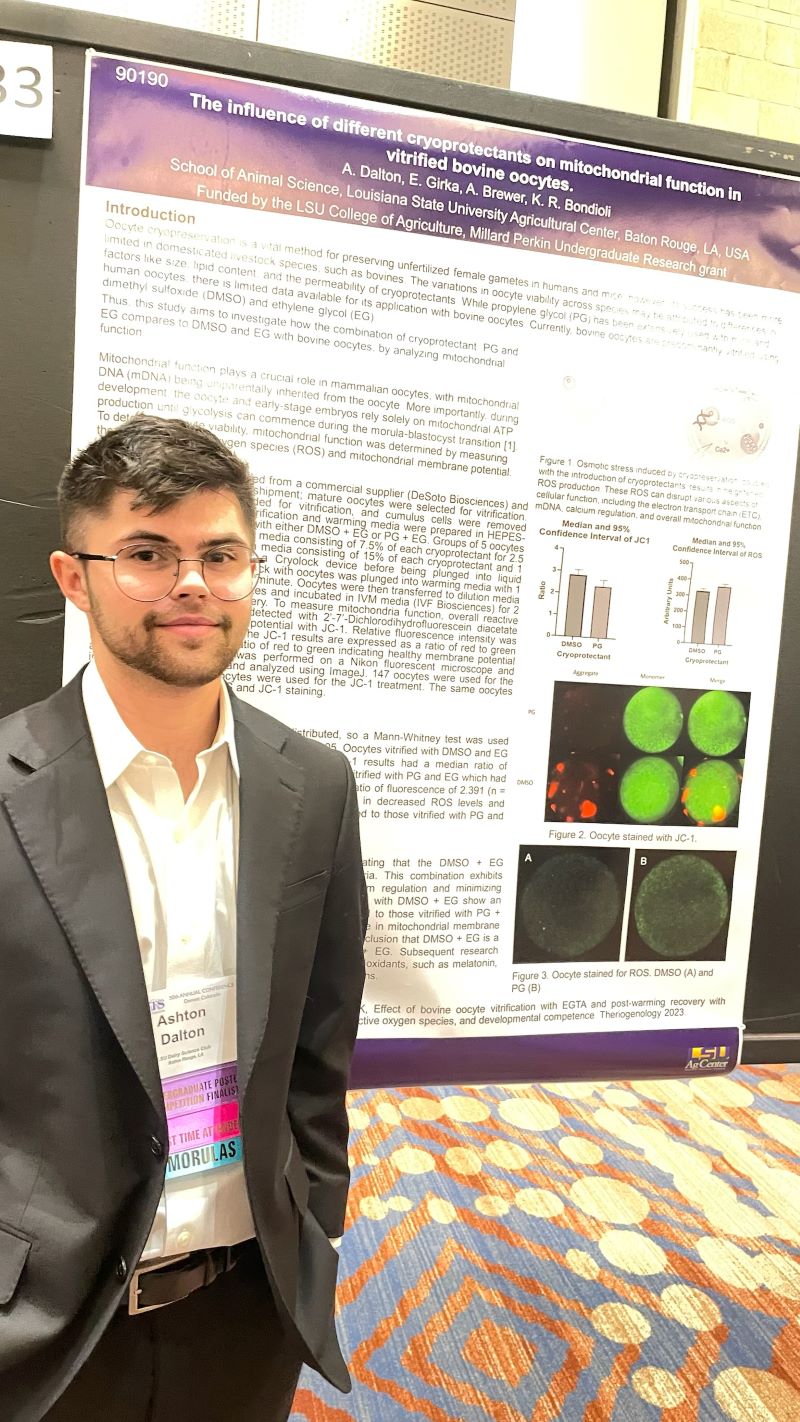Research Spotlight: Ashton Dalton's Exploration of Optimal Cryoprotectants for Vitrified Bovine Oocytes
February 26, 2024
Ashton Dalton, a senior double majoring in Animal Sciences and Religious Studies, was given the opportunity to represent LSU Undergraduate Research at the International Embryo Technology Society’s 50th annual conference in Denver, Colorado and LSU Discover Day 2024 for his involvement in the research project: The influence of different cryoprotectants on mitochondrial function in vitrified bovine oocytes.
Dalton's project sought to investigate the efficacy of using two distinct cryoprotectants for bovine oocytes in vitrification, aiming to identify the optimal solution with the least amount of cell damage. The human field commonly employs a combination of propylene glycol (PG) and ethylene glycol (EG), and the cattle industry commonly uses a combination of dimethyl sulfoxide (DMSO) and EG, so the researchers wanted to study whether a PG and EG combination would be more beneficial when used with cattle.

Dalton had the opportunity to represent LSU Undergraduate Research at LSU Discover Day 2024.
For cryopreservation, the options include employing a gradual freezing method or opting for vitrification. Vitrification is a rapid freezing technique where the oocyte is swiftly immersed in liquid nitrogen. The objective is to achieve a glass-like structure without the formation of ice crystals, ensuring minimal cellular damage.
Continuing to cryopreserve oocytes is significant, particularly in scenarios where transporting the live animal is impractical. For instance, if a highly productive cow in Louisiana needs to be relocated to Canada, cryopreserving and transferring oocytes becomes a more feasible and environmentally friendly alternative than transporting the entire animal by air. Proper cryopreservation not only saves resources but also proves to be a cost-effective and sustainable approach.
The research team received about 300 oocytes from Desoto Bioscience and categorized them based on the cryoprotectant being tested. Their primary assessments focused on mitochondrial function, investigating how it varies with different cryoprotectants. Using a reactive oxygen species (ROS) stain and a JC-1 stain, which highlights membrane permeability, the researchers analyzed the results.

Dalton's research efforts were honored at the International Embryo Technology Society’s 50th annual conference in Denver, Colorado.
The JC-1 stain revealed that DMSO exhibited higher cell permeability, while the ROS stain indicated lower levels of free radicals in cells treated with DMSO. The analysis led to the conclusion that the combination of DMSO and EG proved to be the superior choice of cryoprotectant for vitrified bovine oocytes in the study.
Other researchers involved in this project are:
PI: Dr. Kenneth Bondioli, kbondioli@agcenter.lsu.edu
PhD Candidate: Emily Girka, egirka@agcenter.lsu.edu
Masters Candidate: Ashlyn Brewer, abrew13@lsu.edu